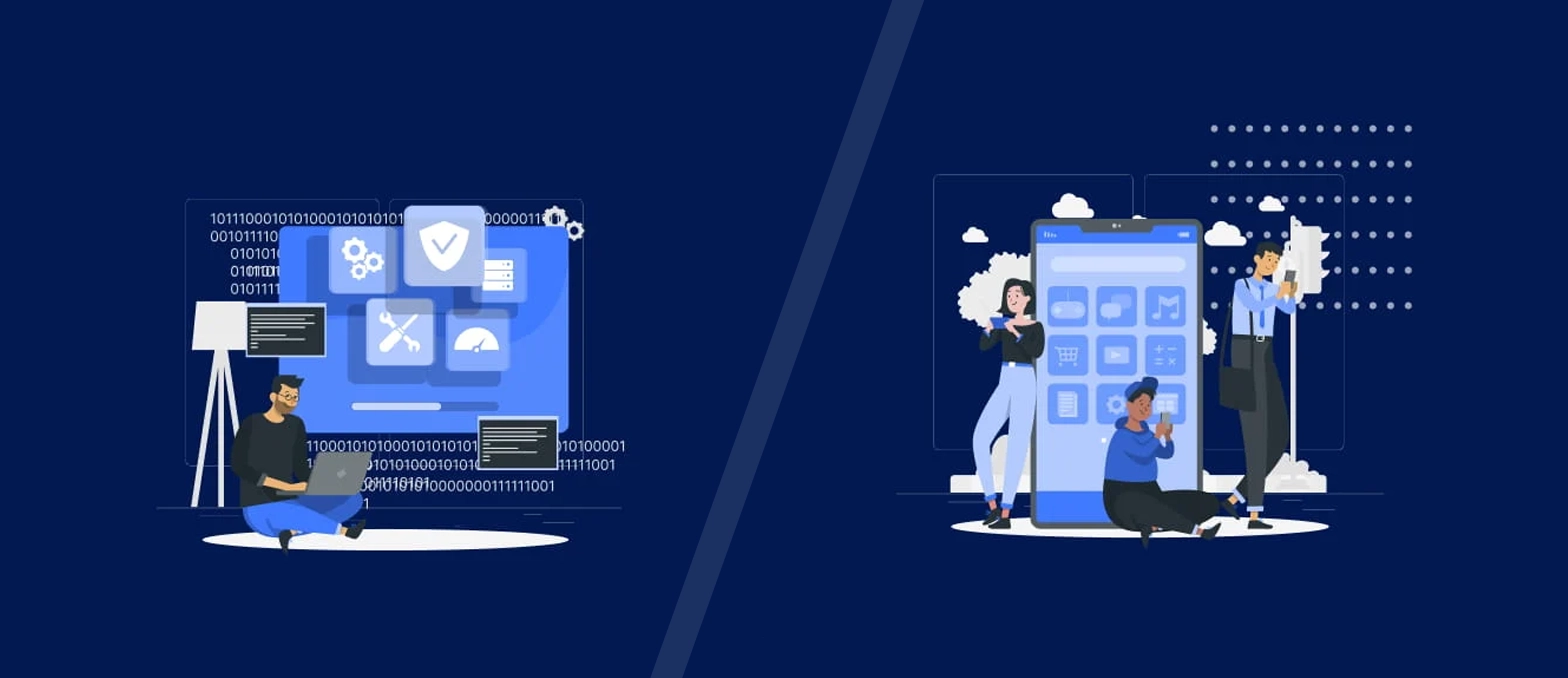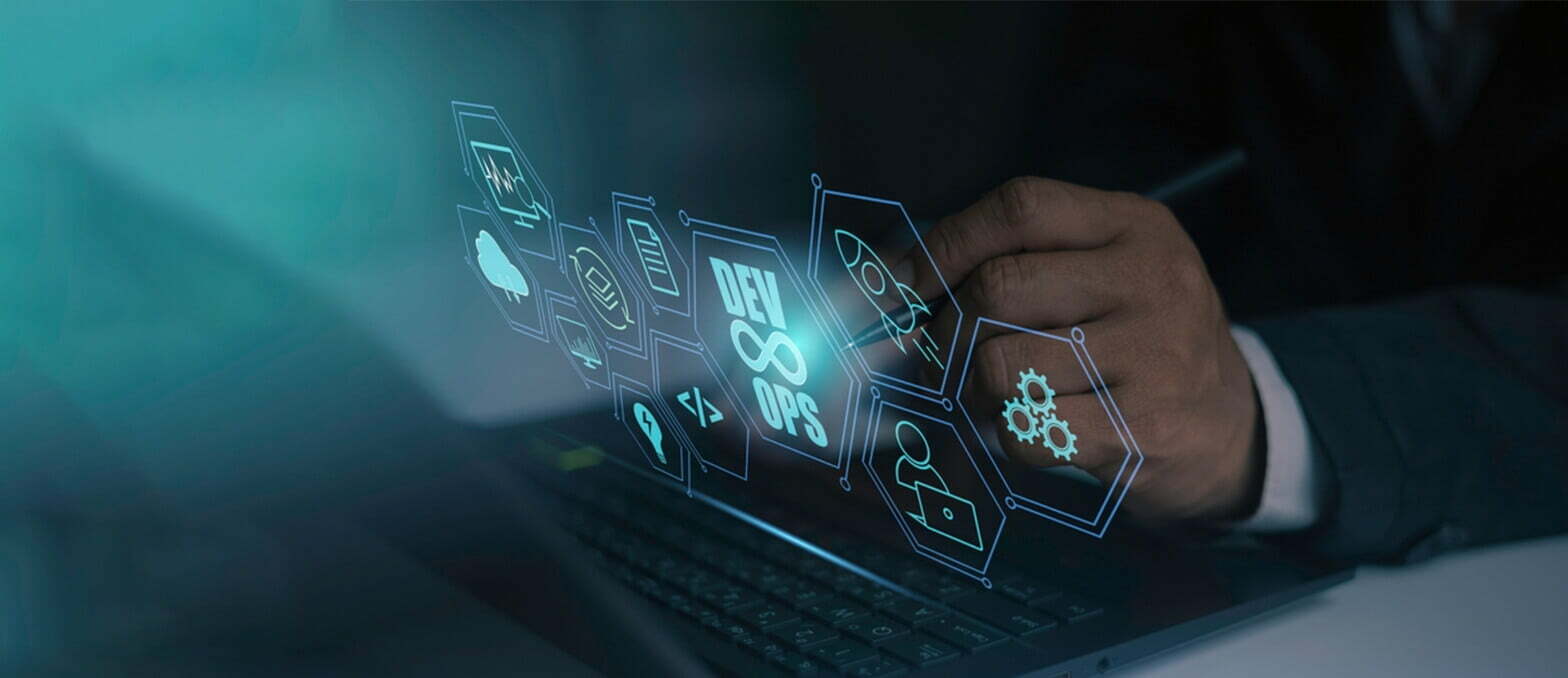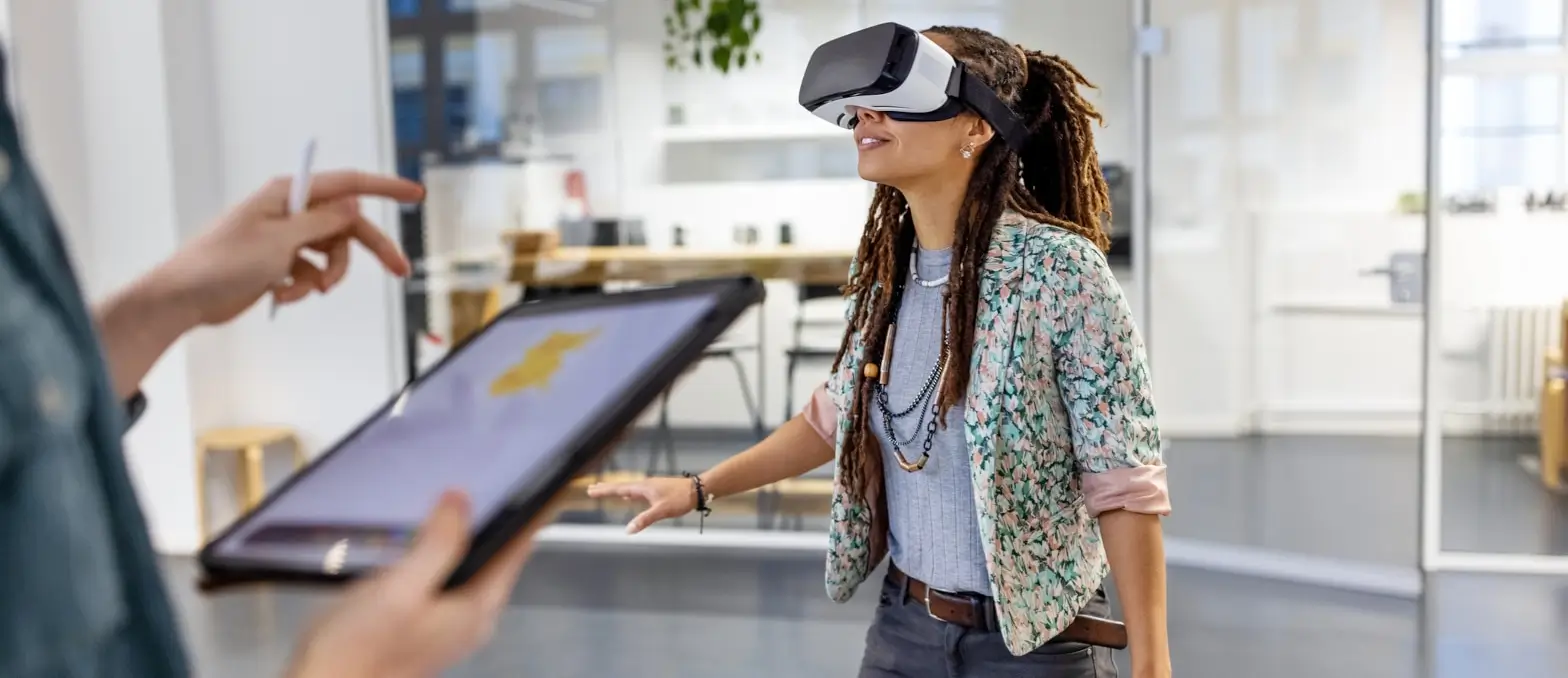With the ongoing advancements in the technology landscape, there has been hardly any domain left untouched – and surveillance is no exception. Computer vision in security has done for security and surveillance something that was once considered impossible. A lot of businesses and organizations originally thought what could possibly lie beyond recording videos of premises. The answer was something that went far beyond what anyone could comprehend.
With computer vision, humans can now go through huge volumes of recorded or live data and fetch useful and actionable insights. Computer vision technology bring a lot of advantages to the table. From noticing and alerting if any unidentified object has been left at a place for too long to tracking movements in unauthorized areas – it covers everything.
There’s no longer any need to sit and watch hours’ worth of video clips to know what went wrong. One can simply integrate their CCTV systems with computer vision and unlock capabilities that are simply fantastic. In this article, we’re going to cover everything including the use cases of computer vision in surveillance to its advantages, implementation challenges, and beyond.
Table of Contents
Importance of Computer Vision Technology in Security & Surveillance
Needless to say, computer vision is a critical technology to adopt for fighting security risks. Here are some of the top reasons that make it important for all types of business and organizations:
- Round-the-Clock Monitoring: With the help of constant monitoring and surveillance-based data, computer vision helps fortify existing security measures.
- Rapid Threat Response: With an AI-backed framework, Computer vision in security can spot security breaches quickly, helping prevent several incidents.
- High-end Precision and Dependability: As opposed to human monitoring, computer vision is capable of carrying out monitoring in a much faster, efficient, and error-free way.
- Scalability for Large-Scale Security: From small offices to smart cities, computer vision adapts to different security needs without massive human resources.
- Budget-Friendly Solution: Computer vision, with its ever-evolving capabilities, helps reduce investments made in huge security teams, which makes it super-affordable.
- Protects Against Crime: Computer vision-powered security solutions go way beyond just recording videos, as their AI-powered features help in forecasting and preventing events before they escalate.
- Integration-Friendly: It can be easily integrated with legacy frameworks and works efficiently with platforms such as biometric scanners, IoT gadgets, and more.
- Privacy-Oriented Solution: Computer vision follows all ethical practices of an organization and sticks to the existing security regulations.
- Evidence Gathering Capabilities: Users can easily tap into AI-backed video insights that help with legal proceedings by backing forensic investigations.
- Long-term Investment: For those looking for long-term security solutions, Computer vision applications in security and surveillance are a great option as they can be customized with additional integrations.
Limitations of Traditional Security and Surveillance
Just like every other ground-breaking technology, the capabilities of CCTV camera-based surveillance also hit their maximum effectiveness a couple of years ago. There are many reasons why traditional security and surveillance isn’t as effective as it once used to be:
- Human Fatigue and Exhaustion: Despite having a number of security cameras installed, it’s difficult to keep an eye on what all of them show.
- Restricted Coverage: As opposed to Computer vision applications in security, when one manually monitors the feed, it’s not practically possible to observe everything, everywhere, all at once.
- Lag in Response: For scenarios when a human is actually able to monitor everything, taking the right step on time during an incident is another challenge.
- Demand High Investment: Traditional security methods require upfront investment in both staff and infrastructure
- Sluggish Threat Detection: When the video feeds are being managed manually, it’s near impossible to take swift action to manage an emergency situation.
- Big Data Handling becomes Tricky: In contrast to Computer vision-powered security solutions, traditional systems find it difficult to manage security footage processing efficiently.
- Lack of Efficiency: Traditional systems are prone to human errors that include false alarms, misinterpretation of an event, and more.
- Low-Growth Aspects: These systems are also unable to bond with the latest security frameworks such as AI, advanced analytics, and IoT gadgets.
Applications and use cases of Computer Vision Surveillance
Computer vision applications in security and surveillance serve various purposes for a wide range of businesses and organizations. From recognizing objects, faces, and video analysis, to identifying the license plates of vehicles breaking the traffic laws – the new-age technology covers it all. Here are some of the top use cases of computer vision in surveillance:
Object Recognition and Tracking
If you’re looking for a system that can help you track surveillance systems and assist in monitoring various objects like people and vehicles, Computer vision can be of help. A wide range of domains, such as retail and security, use it to avoid theft, track vehicle movements, and establish automation. It’s a versatile technology that can be used for both private and public zones, to detect unusual movements or objects.
Facial Recognition
One of the most popular use cases of computer vision in surveillance is facial recognition. It’s mainly used for the identification of people depending on their facial patterns. There are many advantages of leveraging this feature, including access control, tracking down criminals, and cross-checking certain individuals. It works in both public and private areas, and several legal firms use it for investigating cases. However, its penetration into one’s personal space still remains a matter of questionability.
Anomaly Detection
Another notable mention among the top use cases of computer vision in surveillance is anomaly detection. It’s a feature that helps in catching anything that seems to be off-pattern in a live feed. This usually includes tracking unattended objects and objectionable behavior in a given set of circumstances. AI-powered frameworks are great for raising an alert before a situation goes out of hand. Some of the most popular domains where it is leveraged include high-security areas like banks, airports, and more.
Video Content Analysis
Video content analysis is one of those use cases of computer vision in surveillance that needs no introduction. It’s a computer vision feature that helps with processing live or recorded footage, which speeds up real-time monitoring. Since VCA can spot patterns and notice motion, it’s also a great tool for investigations that are carried out after an event occurs. Most of the businesses and organizations out there make use of it to streamline their workplace management.
License Plate Recognition
License plate recognition (LPR) makes use of computer vision for capturing the license plates of vehicles. Traffic management is one of the best use cases of computer vision in surveillance, as it helps in dealing with several issues. With LPR, one can find or track stolen vehicles and reinforce security in an area. With a quick look into the database, organizations can instantly identify vehicles that seem suspicious and pace-up investigations, with negligible human involvement.
Traffic Monitoring
Computer Vision in managing traffic is useful as it is backed by AI-powered frameworks. It’s used by several smart cities in the world to process the flow of traffic, spot congestions, and catch rule-breaking. It’s a great way to improve traffic light timings, and lower the overall rate of road accidents. Legal authorities can also use it to catch reckless driving, wrongful lane switching, and red-light breaking, making roads safe and secure.
People Movement Analysis
Computer vision also makes use of people movement analysis to process the patterns of pedestrians in diverse setups like malls, airports, and more. These movements are then recorded as a part of large datasets that can be accessed for a variety of purposes. Some of the most popular domains where this technology is used include warehouse layout management, crowd control, and more. Government organizations often use it to manage crowds during large concerts and events of similar scale.
Human Behavior Understanding
One of the most revolutionary use cases of computer vision in surveillance is understanding human behavior. This is achieved through a deep analysis of posture, gestures, and communication that happens among humans in different layouts. For an organization that seeks to catch aggressive behavior patterns among its employees or similar objectives, this happens to be a groundbreaking feature. Clinics, research institutes, and educational organizations are often used to prevent conflicts and maintain decorum in public places.
Illegal Activity Detection
For tackling theft, unauthorized access, and vandalism, illegal activity detection is the go-to computer vision feature. This capability can spot doubtful movements and suspicious behavior through its AI-fueled surveillance. You may often see retail stores leveraging this feature to stop shoplifting and police forces using it to identify criminal activities in the city. It’s considered to be among the most well-known use cases of computer vision in surveillance.
Challenges and Ethical Considerations of Implementing AI Vision in Security and Surveillance
While computer vision applications in security and surveillance bring a wide range of benefits, they also have their fair share of issues. Computer vision systems introduce new attack vectors that traditional security frameworks aren’t designed to address, says Alex Lekander, a cyber security expert. “Adversarial machine learning attacks that can fool object recognition are becoming increasingly sophisticated. The most successful implementations combine these technologies with human oversight, leveraging the strengths of both while mitigating their respective vulnerabilities.” Some of the top challenges and ethical considerations related to computer vision in security can be listed as follows:
Challenges
- Precision and Trust: Visual AI systems may sometimes wrongly identify people as threats and fail to detect the real ones.
- Prone to Adversaries: People with wrongful intent may manipulate AI visual systems using images or other techniques to bypass monitoring.
- Expansion-related Problems: Big-scale integrations may ask for considerable amounts of new investments related to infrastructure and technology.
- Information Bias: More often than not, AI systems develop wrong insights since the data upon which it is based carries misinterpretations.
- Legacy Framework Compatibility: A major challenge related to computer vision applications in security includes challenges related to integration with existing frameworks.
- Regulatory and Legal Adherence: Visual AI shall also stay in compliance with legal benchmarks such as CCPA and GDPR.
Ethical Considerations
- Privacy Breach: Better surveillance means more penetration, which may sometimes lead to privacy invasion in general.
- Large-Scale Surveillance: Government authorities, if and when they deem fit, may carry out monitoring on a mass level. This may indicate a possibility of misuse.
- Rigid Insights: The precision with which the Visual AI provides insights through surveillance is often problematic, as there’s a chance that it may have made a wrong identification.
- High Chances of Discrimination: AI-powered monitoring, owing to its lack of understanding towards ethnicity, may lead to biased judgments. Therefore, it leads to mass conflicts.
- Public Consent: People may not always have the knowledge that they are being recorded, which puts their right to privacy and independence at stake.
- Digital Loopholes: Computer vision applications in security and surveillance are prone to hacking and potential data breaches, which may lead to wrongful usage of the recordings.
How to Start Using Computer Vision in Your Processes?
Here’s a step-by-step guide for you to understand how to begin leveraging computer vision for your business or organization:
1. Go Through Use Cases
Develop an understanding of how the benefits of computer vision in security may best work out in your favor.
2. Gather and Organize Data
Collect relevant information that consists of top-quality pictures or videos suitable to your application.
Make sure that the information set is diverse in nature to improve accuracy and minimize bias.
3. Pick the Perfect Tech Stack
Prefer AI platforms such as OpenCV, TensorFlow, or pre-set models under the banners of Google Vision, Microsoft Azure, or AWS.
Choose one among the two options available for deployment – On-premise or Cloud-hosted.
4. Customize AI Models
You can personalize computer vision applications in security to suit the needs and preferences of your business or organization.
Tweak the existing models to ensure they’re giving out the best performance, with high precision and real-time analysis.
5. Launch and Analyze
To fetch the best results, it is suggested that you link computer vision with your legacy frameworks.
Remember to ensure routine testing, and upgrades, to ensure your AI model doesn’t go out-of-date.
6. Resolve Security and Ethical Issues
You must ensure all of your computer vision-powered security solutions adhere to information privacy laws.
Additionally, put in place the best-in-class cybersecurity protocols to safeguard sensitive information.
Conclusion
Overall, Computer vision development services have completely changed how humans look at security and monitoring. From managing traffic flow and securing restricted areas to reducing theft — computer vision handles it all. It’d be more than safe to say that what we’re witnessing now is just the tip of the iceberg. With the ongoing research and development in the field of AI and ML, we’d only see more groundbreaking innovations related to Computer vision in security.








